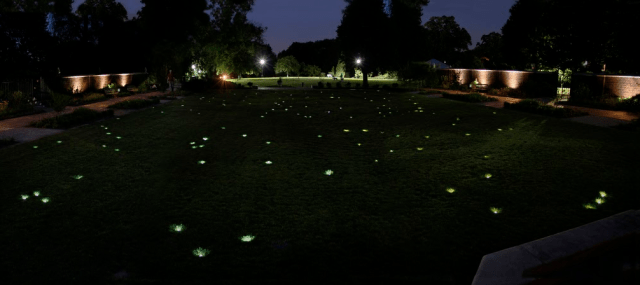Frick, Schenley, Riverview, Emerald View, and Highland Park are all gems, bringing the beauty of nature into the heart of the city. It’s hard to improve upon them.
Yet, that’s what the city’s new Art in Parks program is looking to do — to enhance these beloved places with new large-scale public artworks, including “object-based sculpture, site-specific installations, and landscape works.”
A total of $500,000 is being put towards new art in those five biggest Pittsburgh parks, thanks to a RAD (Regional Asset District) grant. Artists are invited to apply, and may be awarded up to $100,000.
“We’re interested in works that are bold and focused on the future,” says the city’s Public Art & Civic Design Manager Sarah Minnaert. “A strong piece of public art is reflective, provocative, and activates community dialogue.”
An example of a successful piece of public art, says Minnaert, is “Cascade, Transform, Pollinate, and Illuminate,” by Oreen Cohen and Alison Zapata of OOA Designs (2020) in the new Wightman Park in Squirrel Hill.

“These works are an example of innovative art that is respectful of history while sharing a modern message,” says Minnaert. “Each piece highlights Wightman Park’s water and pollinator conservancy initiatives and recognizes the history of the site as a glass manufacturing plant through incorporating locally-made glass plates into the works.”
Sometimes, public art is subtle; other times, it’s impossible to ignore. Tim Kaulen and Industrial Art Co-Op’s “The Workers” at South Side Riverfront Park is one of the latter. At 20 feet tall, it’s constructed from scavenged scrap metal from former local steel mills, and each giant figure weighs 10,000 pounds.

Another successful piece is “Time Travelers” by Edith Abeyta and Sandy Kessler Kaminski (2019), at Elizabeth Street Park in Hazelwood.
“Time Travelers was part of a larger effort to provide the Hazelwood community with access to play through designing and creating a park,” says Minnaert. “This mural became part of the park’s design and is representative of the importance of community engagement as well as how art can bridge communities.”

Public art consultant and visual artist Morton Brown, former Public Art Manager for the city of Pittsburgh, counts the oddly-titled “7:11AM 11.20.1979 79°55’W 40°27’N,” by artist Janet Zweig (2009) in the Mellon Park Walled Garden as one of the best in the city. Minnaert agrees.
“Both a work for the general public and a memorial, this artwork brings 150 stars and planets to the lawn of the garden, reflecting the sky that hovered over it at the moment of Ann Katherine Seaman’s birth in 1979,” says Zweig on her website. “The title refers to that specific time, date, longitude, and latitude. After dark, visitors see the night sky in the lawn, In the day, 150 stone markers can be found in the lawn.”

The philosophy behind public art is changing, and so are our conceptions of it.
“We once revered figurative statues of ‘important men,’ and as time passed, we began to create monumental, abstract and colorful sculptures,” says Brown. “Today, we are more interested in connection to community, and the context of the site. We want to make art that is site-specific, and not art that can be thought of as ‘plop-art’—art that could be picked up and placed anywhere.”
The Art in Parks call is not limited to Pittsburgh-based artists. The city has allocated $100,000 to spend per park, and there will be at least one artist per park — so at least five artists will be selected. They may select more than one artist/artwork per park. No artist will receive more than $100,000.
Artists will be selected this spring, develop their projects, and start installation in the fall of 2021.
“I want the city to be so successful with this round, that it continues this model into the future,” says Brown. “I want Pittsburgh artists to be supported, uplifted, and succeed from interacting with the City on this. Our residents have wanted this kind of opportunity for so long, and I am very pleased and excited to see what comes of it.”
Two open online artist information sessions are coming up.
• Monday, Mar 15, 11 a.m. – noon
• Wednesday, Mar 17, 5 – 6:00 p.m.
Those interested may join via Zoom at this link, or by telephone at 312-626-6799.
The Art in Parks program is made possible through a RADical ImPAct Grant from the Allegheny Regional Asset District.

